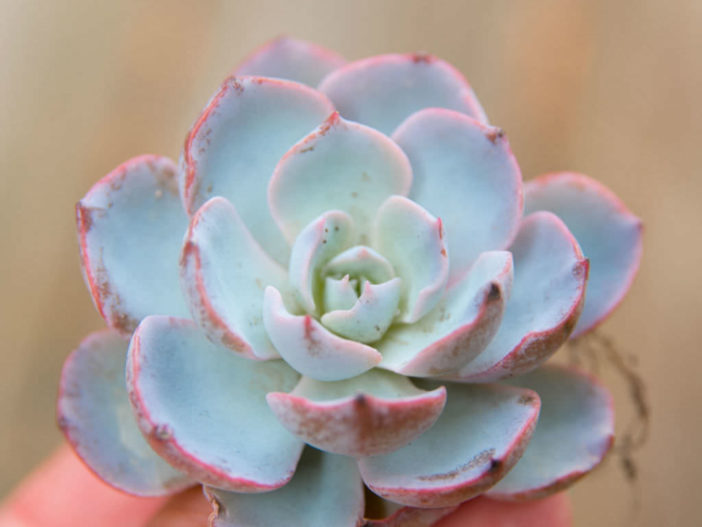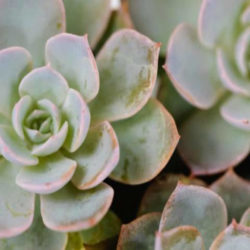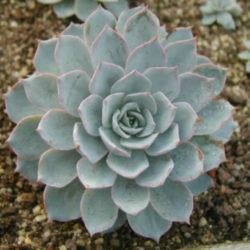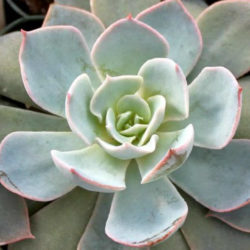Scientific Name
Echeveria 'Morning Beauty'
Synonym(s)
Echeveria subsessilis, Echeveria subsessilis 'Morning Beauty'
Scientific Classification
Family: Crassulaceae
Subfamily: Sempervivoideae
Tribe: Sedeae
Genus: Echeveria
Origin
Some thought it to be a naturally occurring form of Echeveria desmetiana, also listed as Echeveria peacockii. Others think it results from a cross between Echeveria cante and Echeveria shaviana.
Description
Echeveria 'Morning Beauty', also known as Echeveria subsessilis, is a stunning succulent that forms a solitary rosette of numerous densely crowded, pale blue leaves with reddish margins and a thick waxy coating. The rosette grows up to 4 inches (10 cm) in diameter. Leaves are spoon-shaped, slightly keeled on the lower surface, and end in a short sharp point.
In spring, the plant produces several erect, unbranched, arching stalks with reddish-orange, bell-shaped flowers.

Hardiness
USDA hardiness zones 9b to 11b: from 25 °F (−3.9 °C) to 50 °F (+10 °C).
How to Grow and Care
Most common Echeveria species are not complicated succulents to grow, provided you follow a few basic rules. First, be careful never to let water sit in the rosette as it can cause rot or fungal diseases that will kill the plant. Additionally, remove dead leaves from the bottom of the plant as it grows. These dead leaves provide a haven for pests, and Echeverias are susceptible to mealy bugs. Finally, as with all succulents, careful watering habits and plenty of light will help ensure success.
Repot as needed, preferably during the warm season. To repot a succulent, ensure the soil is dry before repotting, then gently remove the pot. Knock away the old soil from the roots, removing any rotted or dead roots. Treat any cuts with a fungicide. Place the plant in its new pot and backfill it with potting soil, spreading the roots out as you repot. Leave the plant dry for a week or so, then begin to water lightly to reduce the risk of root rot.
Most Echeveria can be easily propagated from leaf cuttings, although a few are better from seeds or stem cuttings. Place the individual leaf in a succulent or cacti mix to propagate a leaf cutting and cover the dish until the new plant sprouts.
See more at How to Grow and Care for Echeveria.
Links
- Back to genus Echeveria
- Succupedia: Browse succulents by Scientific Name, Common Name, Genus, Family, USDA Hardiness Zone, Origin, or cacti by Genus
Photo Gallery
Click on a photo to see a larger version.


